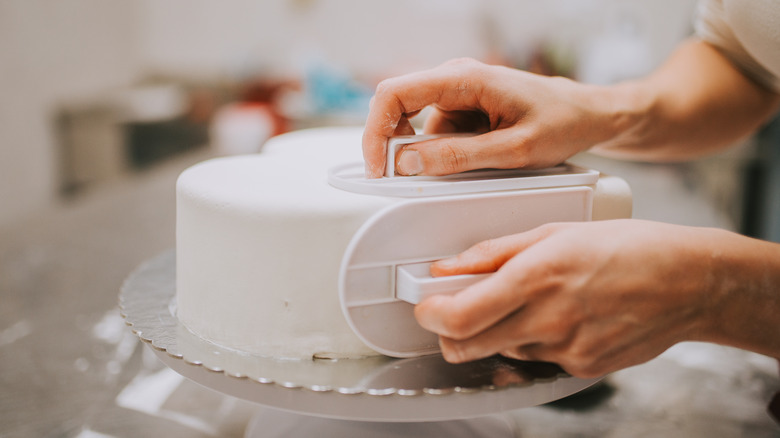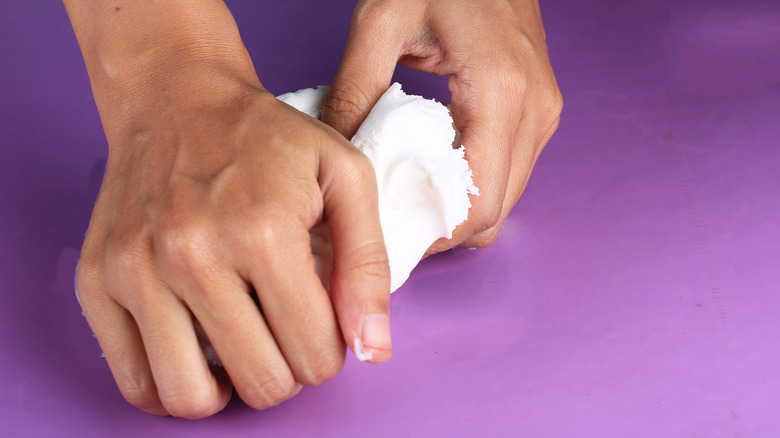Easily Fix The Bubbles On Your Cake With A Fondant Smoother
Love it or hate it, fondant is a widely popular staple in the world of baking and isn't going anywhere anytime soon. Frankly, without it, we wouldn't see nearly as many three-dimensional, gravity-defying confectionery creations as we do in today's cake-based decorations. If fondant's 500-year-old existence has taught bakers anything, it's that, despite the centuries we've had to perfect this edible icing technique, mastering fondant can still be tricky even for seasoned bakers. A lot can go wrong when you want to create a beautifully smooth texture and give your cake a professional touch. One of the most common struggles of using this ultra-pliable icing is preventing air pockets from forming underneath after you've laid it over your cake.
Pesky fondant bubbles can leave ugly bulges and lumps on cakes and can occur for several reasons. However, that doesn't mean the bake you worked so hard to create is ruined or needs to be redone. Whether you've got bubbles forming underneath your cake's fondant or within the fondant mixture itself, it's nothing your trusty smoothing tool can't iron out. Take a few minutes to survey your cake's surface, hunt down all the air bubbles, and gently push them to the center of the cake with the fondant smoother and your fingers. For more stubborn bubbles, use a pin or toothpick to poke a small hole in the bubble at a low angle to minimize leaving a mark and smooth it over several times until it disappears completely.
Other steps to minimize air bubbles in fondant
The poking method is quick and easy enough, although time-consuming. Baking is a labor of love, after all. However, if you'd like to minimize the post-fondant bubble hunt all over your cake, you can nip it in the bud (somewhat) with the right amount of kneading. Folding fondant over too much will create even more bubbles and, in turn, more work for you in the end. Stick to kneading fondant with the heel of your hand for the best results. If you decide to use an actually good-tasting fondant recipe for your bake, you'll be much happier with the end result.
Be sure not to use any perishable fillings in your cake that need to be refrigerated for long periods of time. If you do have to refrigerate it, air pockets will inevitably form, so be prepared to start poking. Baked goods need some time to adjust to room temperature after being refrigerated, which allows gravity to do its thing and slowly release the air inside. Not only are bubbles unsightly — especially to the perfectionist baker — but they can slowly get bigger over time and potentially cause a cake blowout. Big cake mistakes aren't a pretty sight when disaster strikes, especially if the area that explodes is supporting the weight of other cake tiers. Therefore, it's best to poke away until you've achieved the smooth, pristine fondant surface you envisioned.

